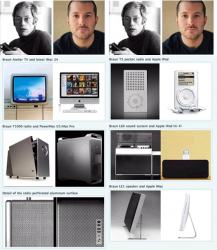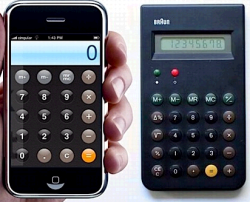How did a British polytechnic graduate become the design genius behind £200billion Apple?
Tell me one other tech company that has a designer with THAT fanatical attitude towards perfection. There isn't any. I'd give Ive credit for 90% of Apple's current cash hoard. To me it would be so fair if Jobs simply paid Ive $10 billion in cash as a "thank you".
Ive endlessly seeks crucial knowledge that can help him to make the thinnest computing devices in the world, so it surprised no one at Apple that their obsessive design genius would take a 14-hour flight for a meeting with one of Japans leading makers of katana.
Afterwards Ive, shaven-headed, heavily muscled, in his trademark T-shirt and jeans, watched intently as the man went about his nocturnal labour.
As soon as Ive had the budget, he bought advanced machine-tools for model-making in Apple's design studio. This is what he spends time doing: a continuous process of testing, testing, testing.
With the MacBook Air, he told me it's, metallurgically speaking, about as far as you can actually go with aluminium before you start disrupting molecules. A calm and engaging personal manner becomes almost excitable when he describes the outer limits of transforming stainless steel. This Zen-like obsession with materials, with getting to what he calls the 'local maximum', is what gives Apple products their extreme appearance.
If, Ive argues, you understand how something is made, you understand everything about it. And he does. When Apple's founder, the exigent Steve Jobs, decided he did not like exposed screwheads, Ive's engineering knowledge (with an added dash of intuitive genius) found a way to avoid them: Apple uses magnets to hold components together.
Tell me one other tech company that has a designer with THAT fanatical attitude towards perfection. There isn't any. I'd give Ive credit for 90% of Apple's current cash hoard. To me it would be so fair if Jobs simply paid Ive $10 billion in cash as a "thank you".


 's design. They're nice and all, but OS X is what gets me excited.
's design. They're nice and all, but OS X is what gets me excited.

